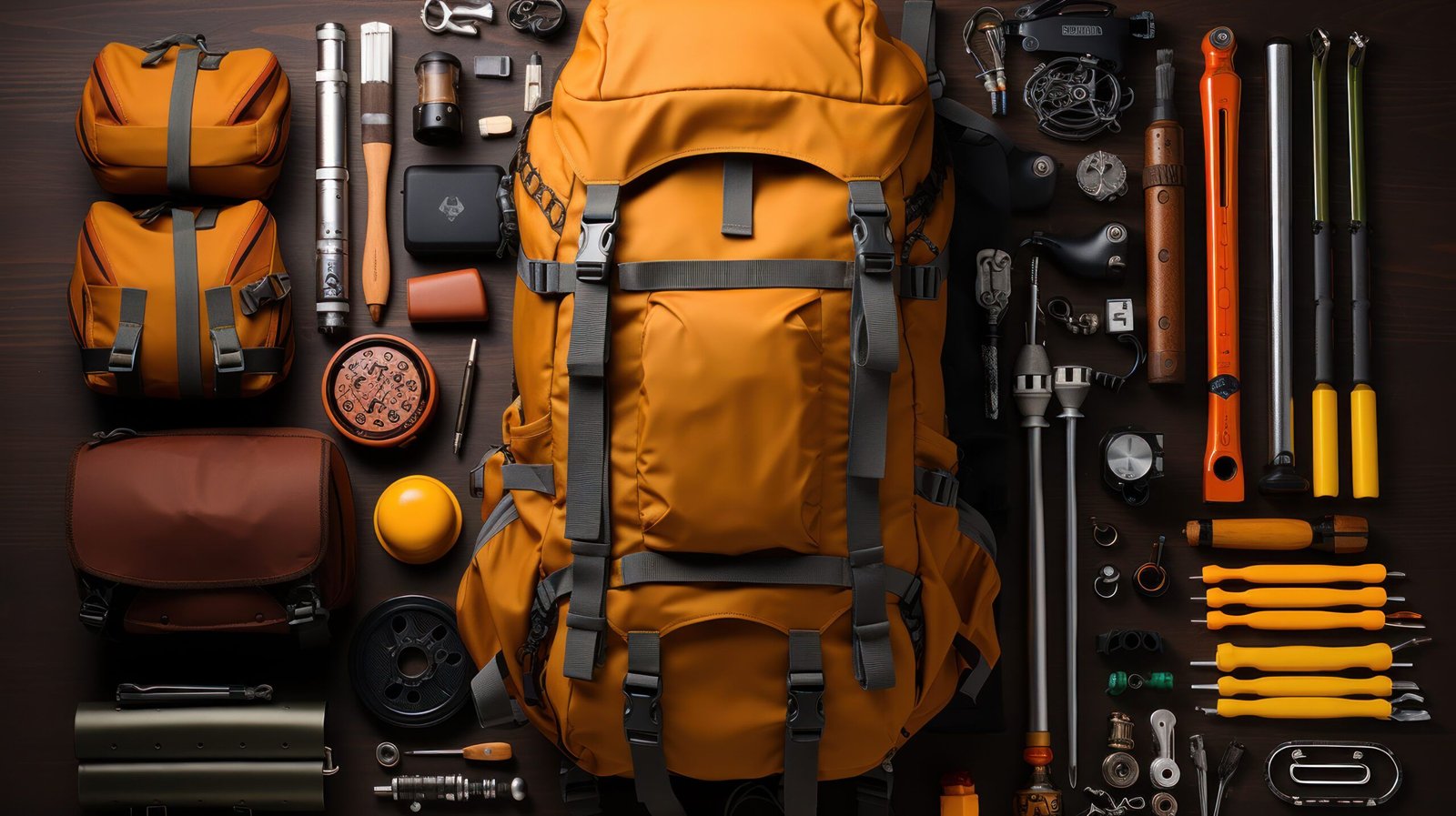Trekking is an incredible way to reconnect with nature, challenge yourself mentally and physically, and experience landscapes far removed from daily life. For those venturing into the breathtaking terrain of trekking in Uttarakhand, a region famous for its rugged mountains, lush valleys, and spiritual essence, preparation is key. Packing the right equipment not only enhances the experience but also ensures safety on your adventure.
This guide will walk you through all the essentials you need to take with you on your next trekking trip, whether you’re an experienced mountaineer or just starting your hiking journey.
Why Packing Right Matters
Imagine standing amid snow-clad peaks or dense pine forests, only to realize you forgot a rainproof jacket or a first-aid kit. Packing carefully for a trek keeps potential problems at bay, ensuring you can fully enjoy the serenity and thrill of trekking in Uttarakhand. From unpredictable weather to rugged terrains, your gear determines how well-prepared you’ll be for challenges on the trail.
Whether you’re planning multi-day expeditions like the Valley of Flowers trek or easier routes like the Chopta trek, here’s what deserves a spot in your backpack.
Top 20 Essentials to Carry on Your Trekking Trip

1. Backpack (with Rain Cover)
Your backpack is your best companion on a trek, so invest in a high-quality, durable one. Aim for a capacity of 40-60 liters for multi-day treks. Ensure it has ergonomic straps and a built-in rain cover to protect your gear in wet conditions.
2. Sturdy Trekking Shoes
Don’t settle for regular sneakers. Good-quality trekking shoes are a must for handling diverse terrains, from rocky patches to muddy trails. Look for waterproof options with proper ankle support, especially when trekking in Uttarakhand, where trails often include steep slopes.
3. Weather-Appropriate Clothing
Layering is the golden rule of trekking attire.
- Base Layer: Moisture-wicking thermal innerwear.
- Mid Layer: Fleece jackets to keep you warm.
- Outer Layer: A windproof and waterproof jacket to shield against rain or cold high-altitude winds.
Pack quick-dry hiking pants and avoid heavy cotton fabrics that trap moisture.
4. Navigation Tools
Getting lost can quickly turn your peaceful trek into a survival situation. Carry a detailed trail map, compass, or GPS app downloaded with offline maps. If you’re trekking in Uttarakhand, make sure your map details popular trails like Har Ki Dun or Kedarkantha.
5. First-Aid Kit
No trek is without its bumps and scrapes. A fully equipped first-aid kit should include band-aids, antiseptic ointments, pain relief sprays, and any personal medications. Add altitude sickness pills when scaling higher elevations like Roopkund or Tungnath.
6. Water Bottles or Hydration Bladders
Hydration is non-negotiable while trekking, as dehydration can cause fatigue or dizziness. Bring at least 2 liters of water and consider purification tablets if you’ll be refilling from streams on longer treks in Uttarakhand.
7. Snacks and Energy Bars
On challenging trails, you’ll need energy to keep going. Pack lightweight, high-calorie snacks like energy bars, nuts, trail mixes, and chocolates. They double up as quick fuel between meals.
8. Sleeping Bag and Sleeping Mat
For overnight treks, a lightweight sleeping bag suitable for lower temperatures is essential. Pair it with a foam or inflatable sleeping mat for insulation from cold ground surfaces.
9. Trekking Poles
Trekking poles reduce strain on your knees and provide balance during tricky ascents and descents. They’re particularly helpful on uneven trails common in Uttarakhand.
10. Headlamp or Flashlights
Early morning starts or late arrivals to campsites require dependable light sources. Headlamps keep your hands free, while flashlights serve as a good backup. Pack extra batteries, too.
11. Multi-Tool or Pocket Knife
This small but versatile tool can assist with everything from cutting ropes to repairing gear. Keep it handy for unexpected situations.
12. Personal Toiletries
Carry biodegradable soap, a quick-dry towel, toothpaste, a toothbrush, and a compact roll of toilet tissue. Leave no trace behind to maintain the beauty of trails.
13. Rain Gear
Nature can be unpredictable, especially while trekking in Uttarakhand’s monsoon season. A lightweight raincoat or poncho can save you from getting drenched unexpectedly.
14. Power Bank and Cables
Mobile phones double as cameras, GPS devices, and emergency tools, so keeping them charged is vital. Invest in a high-capacity power bank, especially on longer multi-day treks.
15. Sunscreen and Sunglasses
High altitudes mean stronger UV radiation. Protect yourself with sunscreen (SPF 50+), lip balm with SPF, and polarized sunglasses.
16. Reusable Utensils
Eco-conscious trekking involves reducing plastic waste. Carry a reusable plate, cup, and cutlery set for meals and beverages.
17. Emergency Shelter
For longer treks, include an ultralight emergency tent, bivvy bag, or thermal blanket. These can act as lifesavers in case of sudden extreme weather.
18. Camera or Binoculars
Capture breathtaking visuals of snow-capped peaks, lush valleys, and diverse wildlife. If you’re a photography enthusiast, ensure your camera is lightweight and waterproof.
19. Personal Identification & Permits
Many trekking routes in Uttarakhand, like the Nanda Devi Biosphere Reserve or Hemkund Sahib, require permits. Keep necessary identification and documents organized in a waterproof pouch.
20. Trekking Backpack Rain Cover
Many trekkers underestimate rain in the mountains, which can crop up without warning. Always carry a durable rain cover to keep your essentials dry.
Pro Tips for Trekking in Uttarakhand
1. Acclimate Properly
Altitude sickness is a real risk when scaling higher trails like Kuari Pass or Rupin Pass. Acclimate to higher altitudes by spending a day or two at intermediate elevations.
2. Plan for Emergency Communication
Cellphone networks are often patchy, especially in higher altitudes. Always inform someone back home about your trek route and expected return date.
3. Eco-Trekking Is a Priority
Preserve Uttarakhand’s natural beauty by leaving no litter behind. Pack reusable items and ensure you don’t disturb local flora or fauna.
4. Choose the Right Trek
Beginners should consider less strenuous trails like Nag Tibba or Dayara Bugyal. Experienced trekkers can challenge themselves with technical treks like Auden’s Col or Bali Pass.
Transform Your Trekking Experience
The beauty of trekking lies not just in conquering landscapes but also in being present in every challenging and serene moment. Proper preparation can make all the difference in how you experience the thrill of trekking in Uttarakhand.
When embarking on your next adventure, double-check your gear list and prioritize safety. By packing smart and treading lightly, you’re all set to explore Uttarakhand’s majestic trails.






